|
photo page 53 |
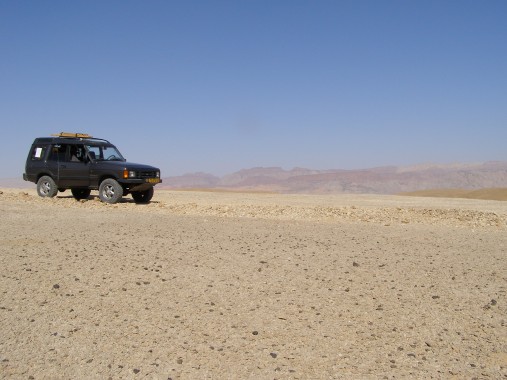
Tijoel over the Uvda plains, with Moti Shem-tov.
|
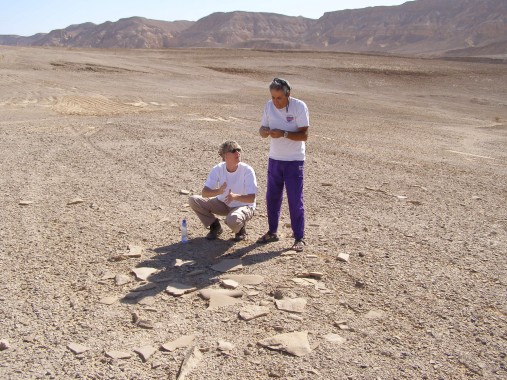
Moti is a desert guide, who has been searching the Negev for years to find remains of prehistoric settlements. He publishes his finds
a.o. at megalithic.co.uk under
the name of "motist". Lots of the Israeli contributions on this site are his.
|
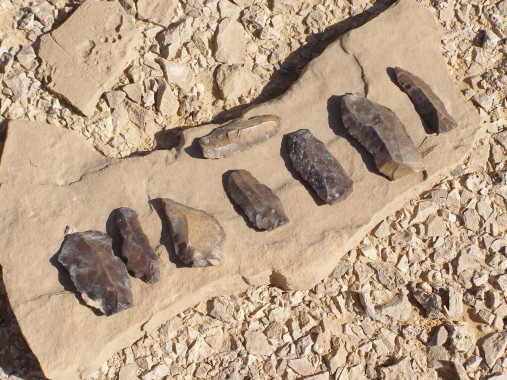
Flint tools, recognizable by the worked sides. Probably these tools have been used as knife or axe.
|
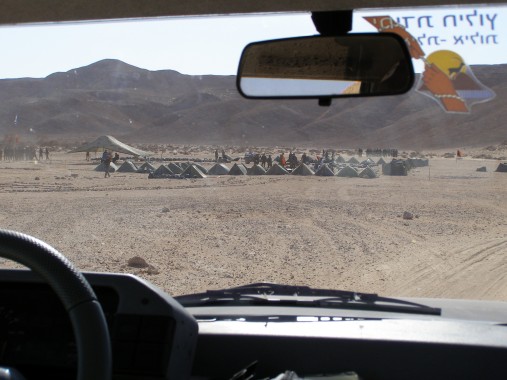
On the heights we encounter an army camp: all new recruits learning to bite the dust.
|
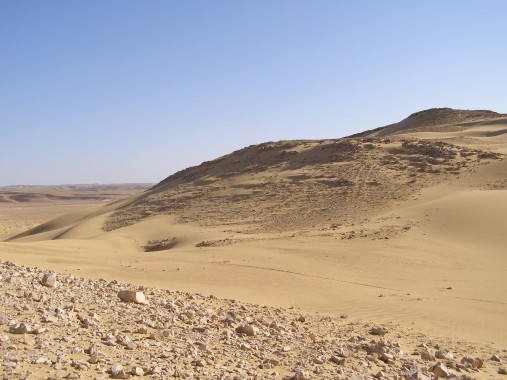
Sand dunes east of Uvda airport.
|
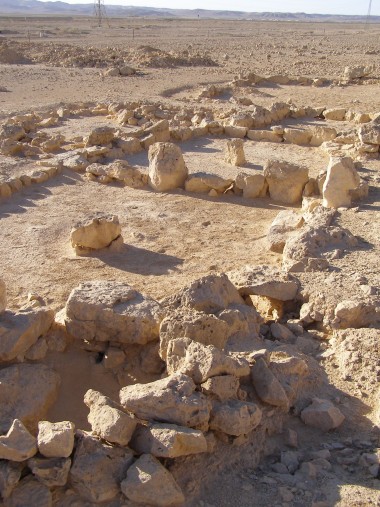
An excavation of houses along the side of the plains. This whole area once was agricultural and green, with barley and maize.
Now it is all sand. The houses are easy to recognize, even the center stone that carried a big pole for the roof.
|
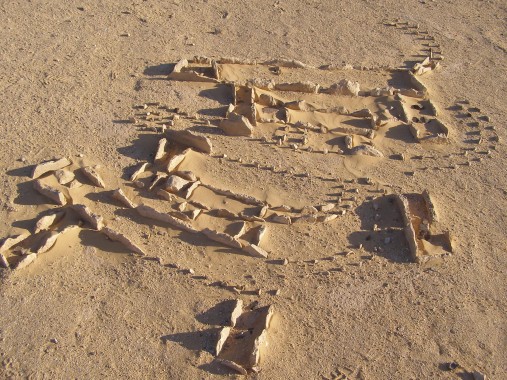
Leopard sanctuary: this area has been cleared of stones, an altar for offerings was made, and these animals were depicted with
small standing stones. There are leopards and oryxes.
|
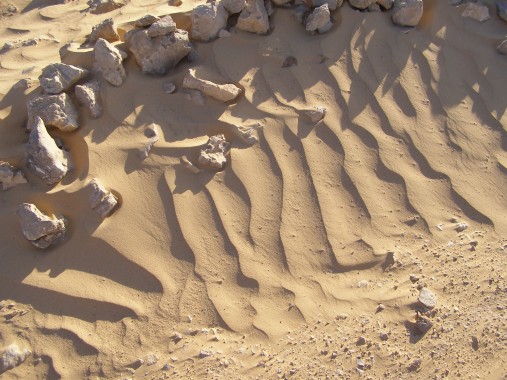
Little sand dunes.
|
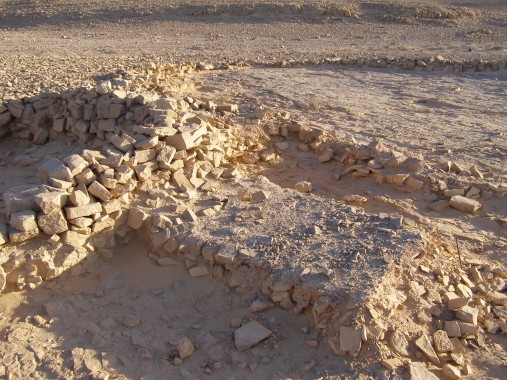
Another excavation, with a thrashing floor where chaff was separated from the wheat, and storage rooms for the wheat.
|
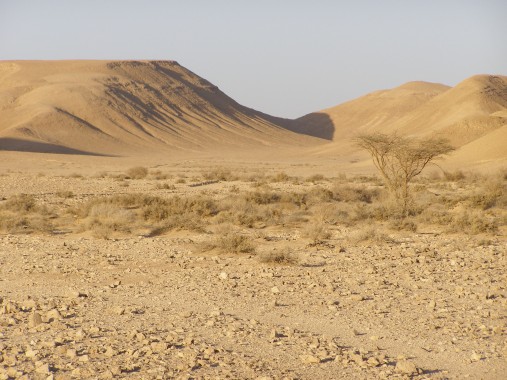
It strikes us how many trees and shrubs are drying out: this year has seen a lot less rain than usual.
|

We make camp near the sand dunes.
|
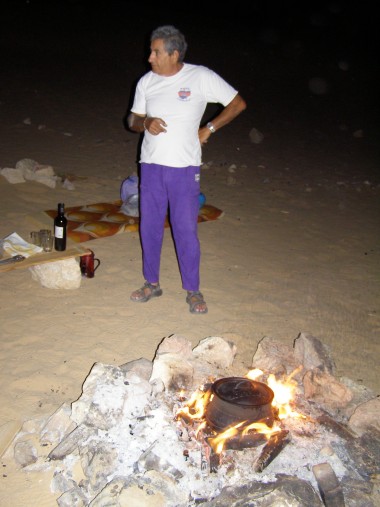
Moti gets a fire going, and soon the poyke is simmering.
|
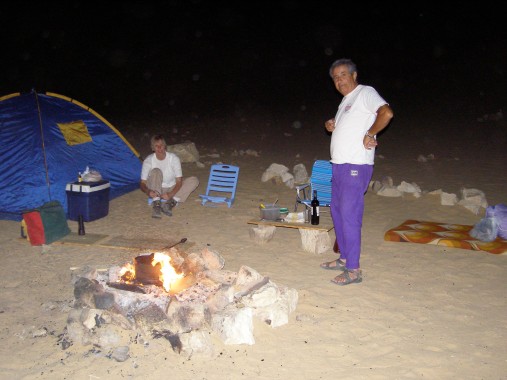
The night is a delight: lots of stars, even the milky way is clearly visible. And all evening long groups of helicopters swoop by with
their search lights on, and distant explosions rumble and light up the sky: the new recruits are having fun! But around midnight, silence
is restored and we sleep like roses.
|
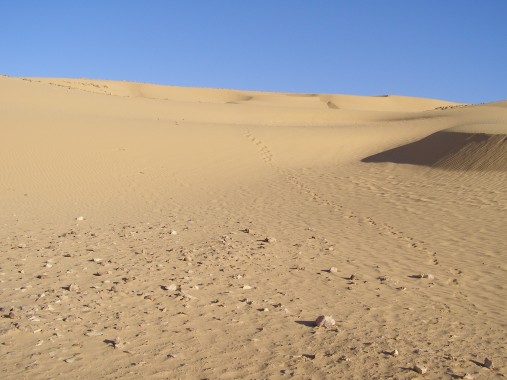
The Negev is an extreme desert, but hardly resembles the stereotype image of endless sand. Here at Uvda it comes closer: lots and lots
of sand, and the tracks of a lonely walker.
|
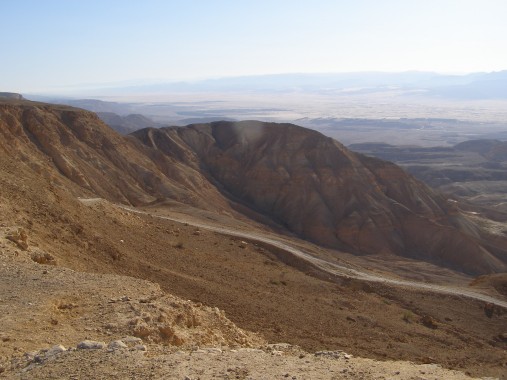
We drive to a kibbutz at the edge of the Arava. The view is phenomenal.
|
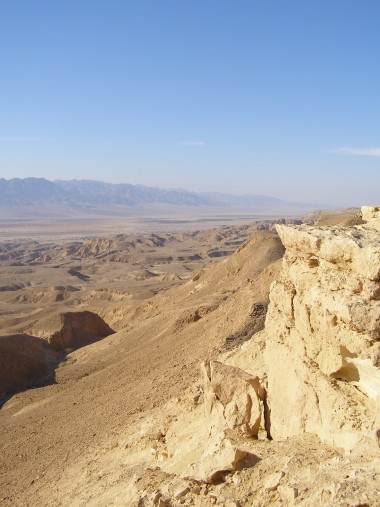
The Arava looks like gold at this very early hour of the day.
|
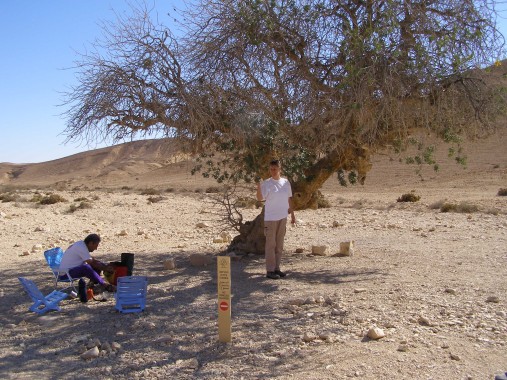
On our way home, we pass Har Bereq, and in a valley of that mountain we stop at the most southern Pistachio tree in the world that is still
alive. The tree clearly feels a bit under the weather, cause it hardly has leaves left. The extreme draught is visible everywhere, also in
the wild life: in these 2 days we only see 2 gazelles and a few ibexes.
|
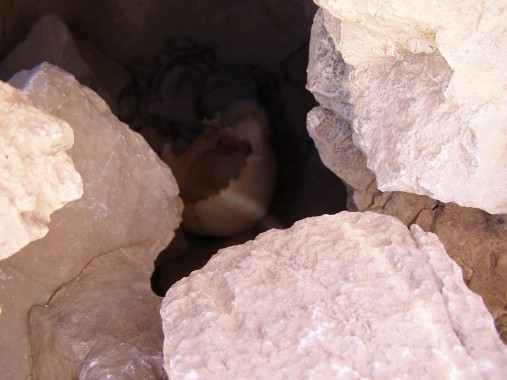
Near the tree is a well, and about 100 meters from there is a hill with small grottos that have been used as a cemetery.
This is the skull of a very young child, not yet closed. Unfortunately, the battery of the camera stopped here, otherwise we would have
make some better pictures.
Thanks Moti, you gave us a completely different look at these surroundings!
|



